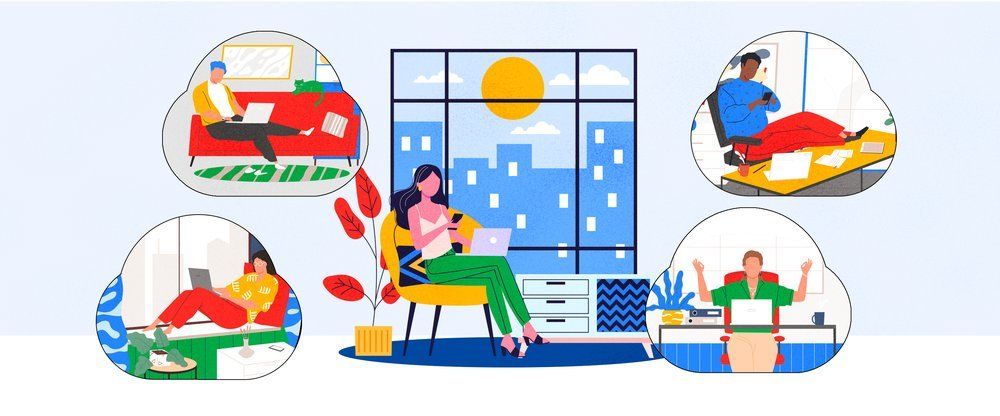

 Tablets are hot! Sales of the Apple iPad, the Google Nexus 7, and others are quickly outpacing laptop sales as consumers begin to realize a full computer is overkill for most of the things done on the Internet. With their compact size, simple interface, long battery life, and relatively inexpensive pricing, tablets are making Internet use more accessible and convenient for a wider range of people. Unlike PC’s, there are not a lot of technical options that you have to deal with when purchasing a tablet. Basically you make sure the screen looks good, it’s responsive, and there is enough storage space for your needs and you’re all set. Tablets are mainly designed to be “viewers” to a content provider’s offerings, and to reach this content, you need an Internet connection. That’s where an important decision comes in: should you get a Wi-Fi only tablet, or spend more and get one with built in 3G/4G access?
Tablets are hot! Sales of the Apple iPad, the Google Nexus 7, and others are quickly outpacing laptop sales as consumers begin to realize a full computer is overkill for most of the things done on the Internet. With their compact size, simple interface, long battery life, and relatively inexpensive pricing, tablets are making Internet use more accessible and convenient for a wider range of people. Unlike PC’s, there are not a lot of technical options that you have to deal with when purchasing a tablet. Basically you make sure the screen looks good, it’s responsive, and there is enough storage space for your needs and you’re all set. Tablets are mainly designed to be “viewers” to a content provider’s offerings, and to reach this content, you need an Internet connection. That’s where an important decision comes in: should you get a Wi-Fi only tablet, or spend more and get one with built in 3G/4G access?
Most tablet manufacturers offer tablets with either Wi-Fi or Wi-Fi and 3G/4G combination options to connect to the Internet. Wi-Fi access is available through most routers on home Internet connections, as well as in coffee shops, libraries, and bookstores. 3G/4G connections allow you to be connected anywhere a Wi-Fi connection isn’t available (provided you’re within range of a cell tower). So, you have to ask yourself “Do I need to be connected every single place I go?”
If you think about it, tablets aren’t used like smartphones. You don’t whip out your tablet to check your Facebook status while walking down the street. They’re used in places you have a chance to sit down and get comfortable, and it seems like most of those places have Wi-Fi available. I myself have owned a tablet for two years and haven’t once regretted saving the extra $200 for the built-in 3G/4G option.
If you’re one of those people that does use your tablet while on the go, or if you tend to travel a lot, there is an alternative that will save a lot of money.
Tablets with a built-in 3G/4G radio are going to charge a premium over their Wi-Fi only counterparts (often $200-$300 more), and then you have to get a 2 year contract with a carrier for your monthly data plan. If you use your tablet in Wi-Fi free areas often, an alternative would be using a Mobile Hotspot. These “credit card” sized devices grab an Internet connection off of a local cell phone tower, then distribute it to your tablet via a Wi-Fi connection. Hotspots have a number of advantages over built-in 3G/4G service
a) Large cost savings when purchasing.
b) Avoids often over-priced/contract locked data fees from the major carriers.
c) Hotspots can supply Internet to any
device, not just a single tablet.
Since Mobile Hotspots are so compact, you can just keep it in your pocket or purse and turn it on if you happen to be in a place with no Wi-Fi available. Hotspot data plans tend to be a lot less expensive than going through carriers like AT&T or Verizon. Also keep in mind that you have the option of turning the service off if you know you’re not going to use it for a while. Some people only want the service while they travel in the summer, or if they live in two different locations and need Internet access at only one of them. You can simply deactivate the service, and then reactivate when you’re ready to use it again (a great advantage to not being stuck in a contract!).
If you need to be able to connect your tablet in areas without Wi-Fi, definitely skip the 3G/4G option. In the same way a 20 oz. bottle of soda is often more expensive than a 2 liter bottle, you’re being charged a premium for the packaging. If you need to keep your tablet connected anywhere, using a Mobile Hotspot makes for a smarter purchase.

